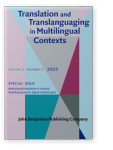This article sheds light upon subtitling as the audiovisual translation (AVT) mode applied to three subtitled
versions of
Oliver Twist. The comparison takes place within the subtitling context of two officially sanctioned
versions (i.e., the musical and the film) and the non-professional and transcreated versions released on social media platforms.
Research has been carried out within audiovisual translation studies with the scope of verifying issues relating to the
translation of characters’ names (appellation), religious terminology, and songs, which are subject to changes and innovative
transformations when transcreated. There is an increasingly high demand for viewer-generated participation in the translation of
audiovisual productions as opposed to traditional passive viewing experiences (
Di Giovanni and
Gambier 2018, vii–viii). The significant rise of user-oriented modes of translation released on popular video-sharing
platforms has not been systematically researched. Attention is primarily paid to the Chinese subtitles produced for
Oliver
Twist’s most recent film adaption directed by
Polanski (2005). These
subtitles reinterpret and redirect the product’s cultural and temporal specificities and complexities to reinforce Chinese
cultural heritage (
Liang 2020, 26). A particular role is played by transcreation in
subtitling as a translation method that is able to embrace the richness of
Oliver Twist in its various adapted
forms: theatre, cinema, and social media platforms. Drawing upon the concept of abusive subtitling coined by
Abé Mark Nornes (1999), the paper investigates the definition of transcreation within subtitling
procedures and scrutinises technological advances and multimodal creativity within the context of
Oliver Twist.
In this sense, transcreation as a fan-driven practice in subtitling has the scope of giving visibility to artistic works in a more
creative way, as well as of presenting them tinted with individualised characteristics which cater to the various demands for a
variety of audiences.
